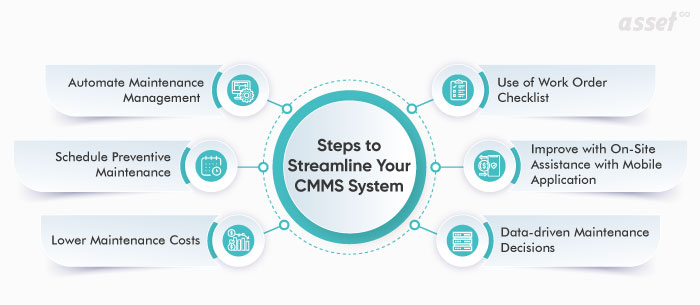Facilities management employees are a little like the unsung heroes of the business world. They’re the people who keep everything running smoothly and available for use when you need it. Usually, in a small office when the facilities manager is off and a piece of equipment fails, employees let out an audible sigh and are reminded why the facilities team matters.
Can they operate better and avoid mistakes along the way? Sure, it’s possible, but it’s necessary to utilise software tools like a CMMS to do so. After all, there’s only so far that a pad of paper and a pen can get you, and when the facilities are substantial, a more sophisticated solution is called for.
In this article, we cover what a CMMS is and how it can help to streamline facilities management.
CMMS 101
It’s valid to ask at the outset – what is CMMS? The answer is that it’s a software solution designed to make the job of a facilities manager far easier than it was in the past. Rather than needing to keep a tally of every asset in their head, and only reacting when getting the call that some equipment (a PC, a printer, a fire alarm) isn’t working, managers can instead be proactive rather than only reactive. The beauty of CMMS software is that they get everything out of the head and into a structured system.
This is the core principle of personal organiser David Allen who has written about just that in his ‘Getting Things Done’ business book. His first step is always to get all tasks into a proven system and only then can they be reviewed. A CMMS helps to do exactly that, which explains why it’s a successful approach.
Now, if you’re looking for a tool that takes things further by leveraging collected data to generate intelligent suggestions and task automations, you’ll probably want to look into Intelligent Maintenance Management Platforms (IMMP) — like the one from Infraspeak — as well.
Preventative, Not Punitive
Being aware of all assets and the ones that need to be maintained, serviced, and repaired at times too, is preventative. The flipside of that coin is that failing to do the same leads to complaints from staff when something breaks down, and that feels punitive. Certainly, facilities staff will all get the ‘stink eye’ at that point, which isn’t any fun. So, it’s much better to get ahead of potential problems to keep everyone on their good side.
Better Maintenance Leads to Fewer Requests
When the facilities team is proactively rotating through different assets to ensure they all get looked at, they’re less likely to fail in the future. Certainly, this can mean taking them out of action for a short spell when checking on their functionality. Parts can be inspected for resilience and swapped out if necessary. But otherwise, the equipment can be cleaned and serviced to reduce the instance of failure.
Taking such action through the use of software scheduling allows the facilities team to reduce the number of future breakdown reports. Furthermore, it becomes far less likely that 20 requests will all arrive on the same day, overwhelming the team.
Tracking Avoids Chasing Around Trying to Find Business Assets
An effective CMMS software will include a way to track all assets in a log. This is typically broken down per department or by rough location. However, by using tracking and identification technologies such as RFID or NFC, it’s possible to locate assets within a large facility. This avoids the needless chasing around looking for items to verify that they’re still on the premises.
Sometimes, it’s also possible to get alerted by the software when the tracking indicates that the asset has moved outside the main area. In which case, that usually means that it has been removed from the building. If this is a laptop that is used on business trips, that’s to be expected. However, that’s not always the case, so a timely alert is useful to follow that up immediately. With a non-computerised approach, this wouldn’t be possible.
Review and Update Approaches
When attempting to manage facilities from a distance without technology, everything suffers from outdated information and insufficient amounts of it. Using CMMS software permits a granular look at what’s going right and areas to improve. By having enough data to review and past outcomes to scrutinise, managers can see where changes might be made to avoid a repeat of previous mistakes.
Free Up Time for the Unexpected
Unexpected difficulties within the facilities account for as much as 10 percent of work. However, the facilities team needs sufficient slack in their workload to jump right on the most urgent of those and to resolve them quickly. By using streamlined methods for monitoring and tracking all company assets, it creates the space to assign staff to the unexpected issues that inevitably crop up. Doing so won’t upset the apple cart for other planned work because of the greater efficiencies already found when staying better organised.
For companies with one facilities manager and a few support staff or multiple facilities to be managed by a complete team, using CMMS or IMMP solutions make the task easier because they’re streamlined. No balls are dropped, matters get properly tended to on time, and everyone goes home happy.
The post What is CMMS and How Does It Streamline Facilities Management? appeared first on .


